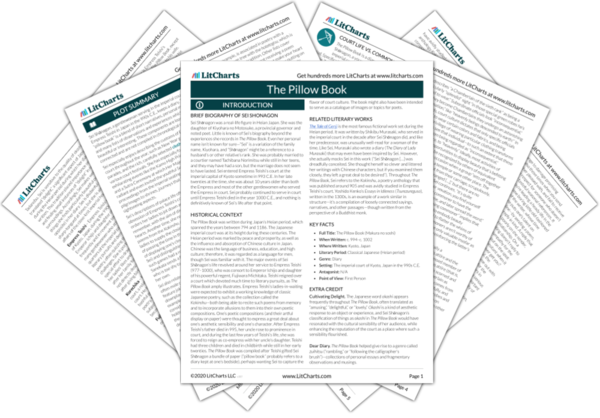The “female style” of painting refers to a softer, “Japanese” style of painting as distinguished from a bolder, “Chinese” form. Dealing with curses was normally a Shinto practice, but sometimes Chinese practitioners of Yin-Yang (a complex system of divination) would do this, too. At the same time, the temple monk would have been Buddhist, showing how various religious traditions intermingled in Japanese court life during the Heian period.
